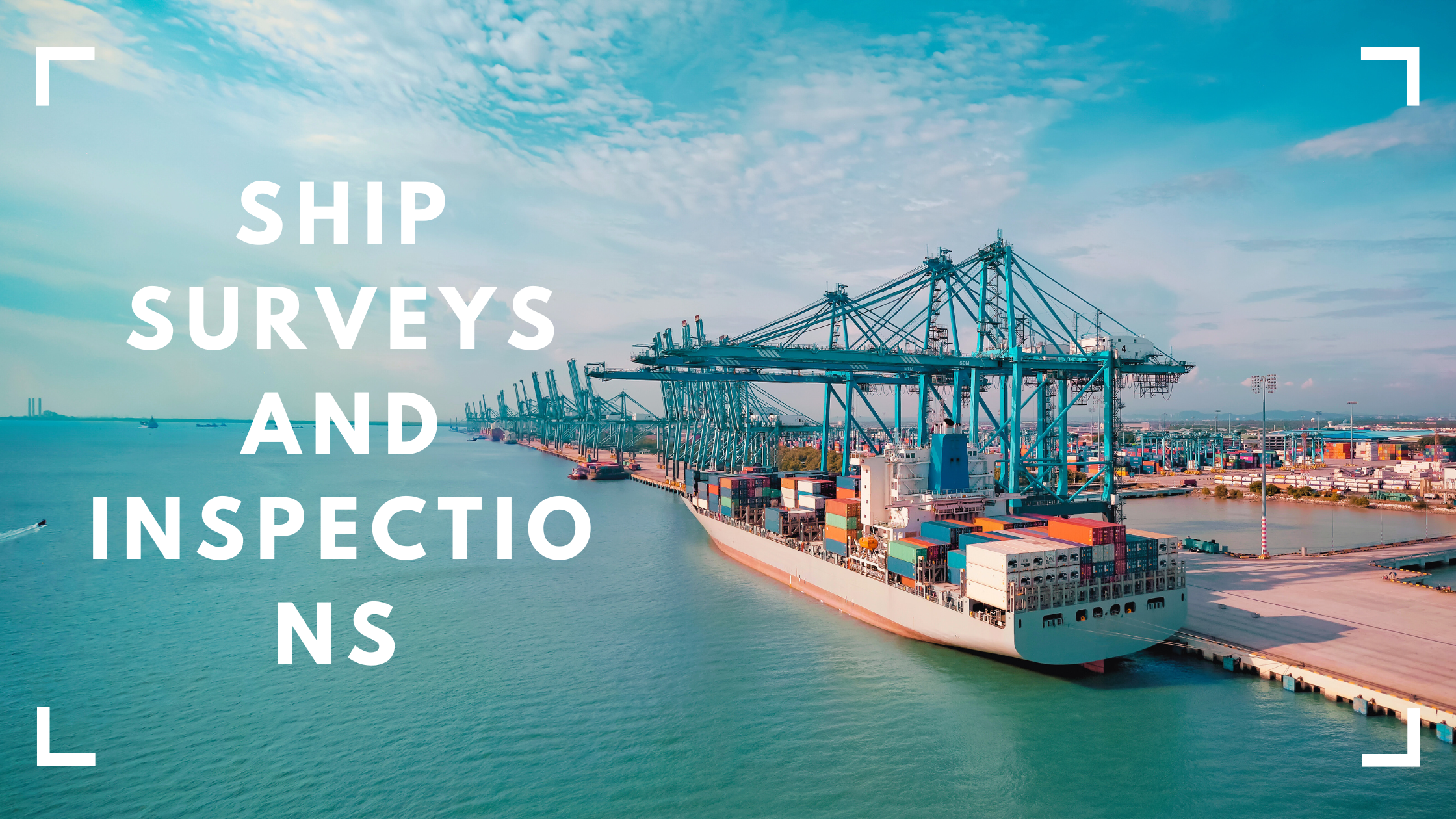
Trans Mowlana Tower, Boropol, Chittagong
+8801727240049

Ship surveys and inspections are crucial for maintaining the seaworthiness, safety, and compliance of vessels in the maritime industry. This article explores the different types of surveys and inspections, their purposes, and how they impact the operational efficiency and safety standards of a vessel. Understanding the difference between a survey and an inspection can help shipowners, charterers, and marine professionals ensure their vessels meet all required standards.
A ship survey is a detailed assessment conducted by a marine surveyor to evaluate the condition, safety, and compliance of a vessel. These surveys are typically required by maritime regulatory bodies, classification societies, and insurance companies to ensure that a ship is seaworthy and meets international safety standards. A survey is performed to assess the ship’s overall structure, including the hull, machinery, and critical equipment, to ensure they are in optimal working condition.
The annual survey is one of the most common types, conducted every year to confirm the vessel continues to meet safety and operational standards. Additionally, specialized surveys like the load line survey and safety construction survey focus on specific aspects of the vessel, such as its load-carrying capacity and structural integrity.
A ship inspection is a thorough visual and operational check conducted to ensure that the vessel complies with international and local regulations, such as those set by the IMO and ISPS. These inspections focus on verifying the proper functioning of essential ship components like propulsion and steering gear, navigation equipment, and fire control systems.
An inspection conducted by regulatory bodies like port state control or classification societies involves a close examination of key safety features, including lifejackets, emergency systems, and cargo holds. Inspections are generally quicker than surveys but are no less critical for the vessel’s operational efficiency.
Many people in the maritime industry struggle with understanding the difference between a survey and an inspection. While both processes assess the condition of a vessel, a survey may be more extensive, often requiring the expertise of a marine surveyor and focused on the structural integrity of the ship. An inspection, on the other hand, usually involves a more routine check of equipment and compliance with safety regulations.
A marine survey dives deeper into the vessel’s seaworthiness, often requiring dry docking and internal examination, while an inspection is more operational, ensuring that the vessel is fit for immediate voyages.
Ship surveys and inspections are essential to maintaining a vessel’s seaworthiness and safety. These processes minimize the risks associated with maritime operations by ensuring that the vessel is prepared to handle both cargo and rough sea conditions. Regular surveys and inspections also prevent costly repairs and downtime by identifying issues early.
For shipowners, charterers, and port authorities, conducting thorough surveys and inspections ensures compliance with international maritime regulations and boosts operational efficiency. Additionally, these procedures help maintain insurance coverage and meet the requirements for ship certification.
Several different types of ship surveys are performed to address specific operational needs:
Each survey is performed by a qualified marine surveyor to ensure the integrity and seaworthiness of the vessel.
Various inspections are conducted to guarantee a vessel’s safety and compliance:
By ensuring that the inspection services are carried out regularly, shipowners can maintain safe operation and reduce the likelihood of costly delays.
Ensuring safe loading is critical to a ship’s overall safety and seaworthiness. Cargo surveys and inspections focus on checking the integrity of cargo holds, verifying that they are clean and free of debris or corrosion that could contaminate the goods. These inspections also ensure that the ship’s cargo and vessel are balanced to prevent listing or capsizing during rough seas.
Cargo inspectors also monitor the loading or discharge process to ensure proper stowage, which minimizes the risk of shifting cargo that can damage the hull or other parts of the vessel.
Port state control plays a crucial role in ensuring that vessels entering their waters comply with international maritime standards. Inspectors board the vessel during port calls to check for any potential safety hazards, including pollution prevention measures, safety management practices, and the condition of the vessel’s critical equipment.
Failing a port state inspection can result in detentions or fines, so maintaining a vessel in compliance is essential for smooth operations.
A condition survey assesses the current state of the vessel’s structure, equipment, and overall seaworthiness. It is typically required when a vessel is being transferred between owners or charterers, or when p&i insurance is being obtained. The survey includes checking the hull, machinery, and cargo holds to ensure the vessel is in good operating condition.
A condition survey is also critical after major repairs, ensuring that the vessel is ready to return to service and meets all regulatory standards.
Modern ship surveys and inspections are not just about safety and operational efficiency; they also focus on ensuring environmental compliance. Vessels must adhere to regulations for ballast water management, pollution prevention, and emissions control. Inspections often include verifying that equipment like fire control plans and pollution prevention systems are functioning correctly.
These inspections help minimize the environmental impact of marine operations, ensuring that ships operate sustainably and in accordance with international laws.